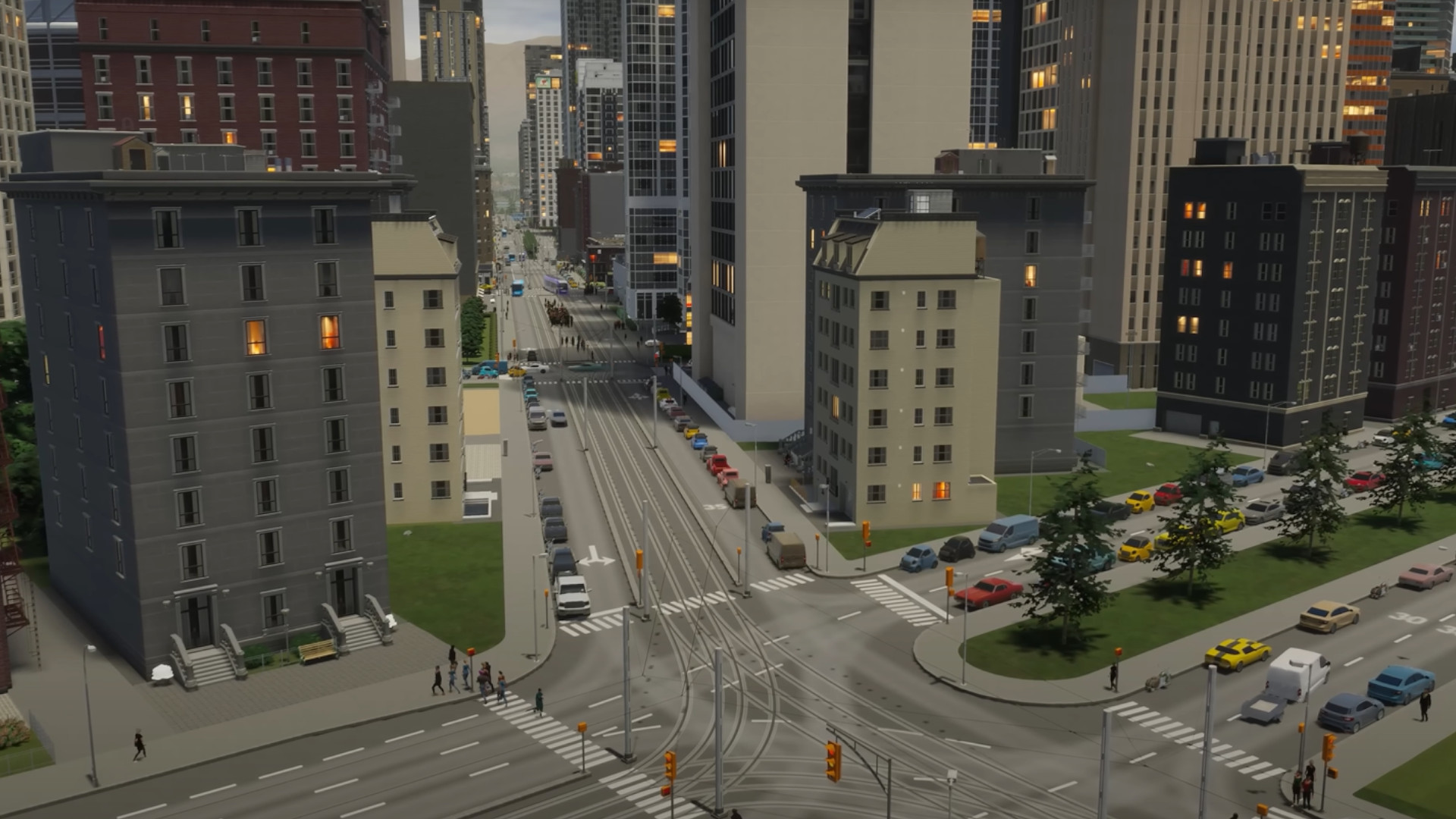
The only real limit will be down to your hardware.
Earlier this week, a developer post for Cities: Skylines 2 revealed that some beefy improvements had been made to the game’s “Agents”—developer speak for pedestrians, cars and the like—that have massively upgraded its capacity for on-screen civs.
“Pathfinding calculations are more numerous and more in-depth than in Cities: Skylines,” the blog explains, “However, the calculations are more efficient, resulting in higher performance across the board as the pathfinding and simulation among other calculations take advantage of all the available processing power of the multicore CPUs.”
So what does that mean for Skylines players? “Cities: Skylines 2 doesn’t feature hard limits for agents moving about in the city. Overall, the performance of the simulation and pathfinding is vastly improved, which means larger populations are possible.”
“The only real limits to the simulation are the hardware limitations on the platform running the game.”
This is a huge step up from the first Skylines’ hard limit of roughly 65,000 Agents, which could create bizarre disconnects between having a population into the hundreds of thousands, while only being able to see a limited number on screen.
Responses on the Skylines Reddit have been a mixture of nail-biting over the safety of hardware, scepticism, and excitement. “Yep, my poor CPU is having a stroke right now,” wrote user evilsummoned_2, while garion333 wrote: “This all seems too good to be true.”
On the subject of the uncapped limit itself, user Ok-Kaleidoscope5627 writes: “While I did hit the limit once or twice [in the first game], knowing that it was always looming killed my desire for any city I was really excited about because I knew that just when they started getting really good, they’d die for reasons outside my control.”
Still, this doesn’t mean that the game’s civilians are infinite, or that it can handle hundreds of thousands of them with no pressure. Unless you want to burn a hole through your CPU, your hardware will tap out at some point, with a different limit for each player.
Now that limit’s uncapped, though—and the game’s pathfinding AI is much improved, with its decision-making incorporating ease of parking and transportation costs—we’re one small step closer to straight-up building the Matrix. I give it about ten more years before city builders are keeping us up at night, wondering what happens to the sapient citizens when we quit to desktop.



